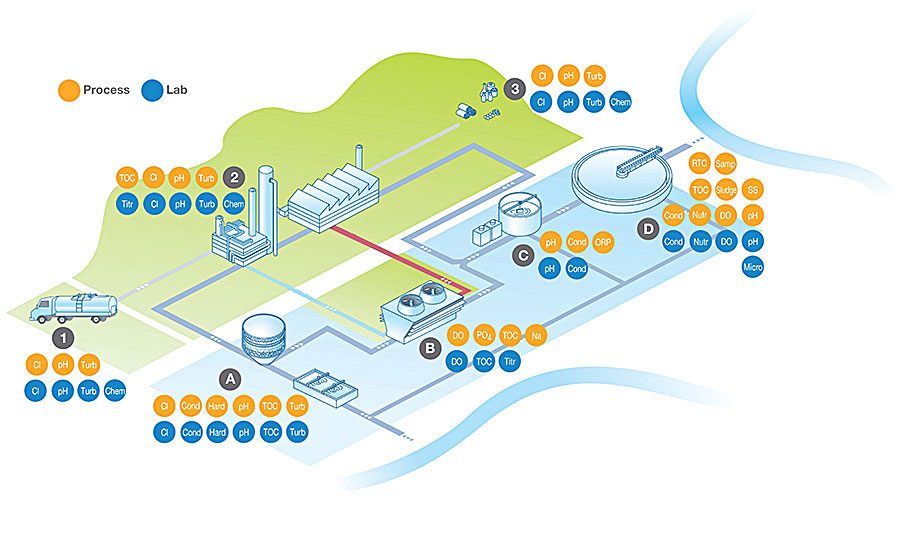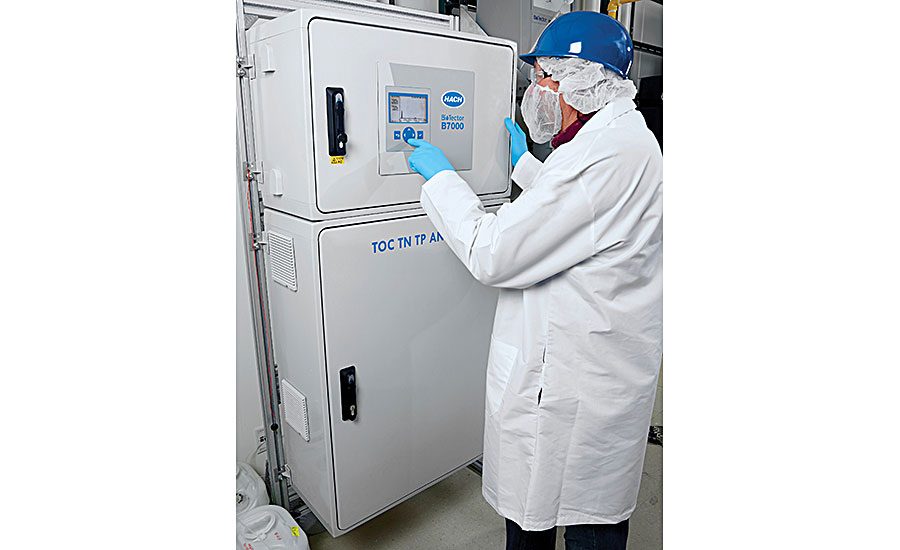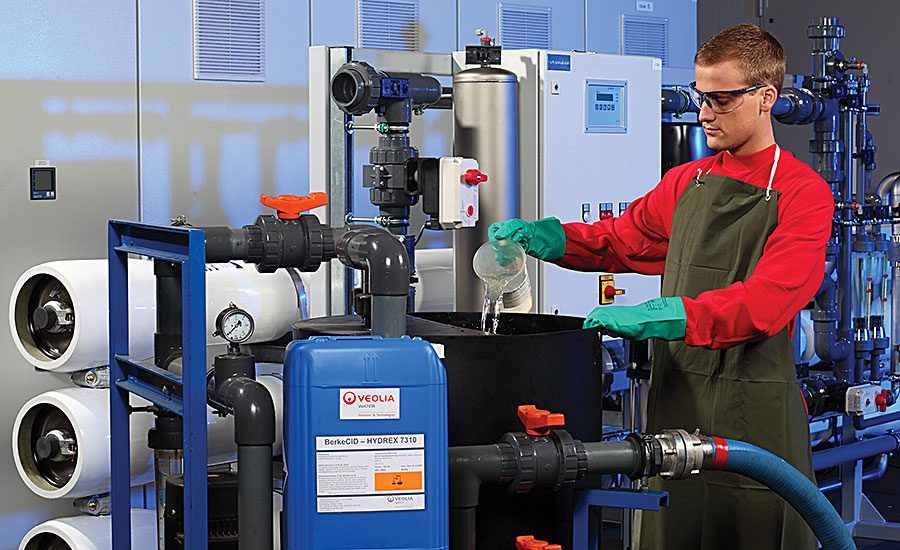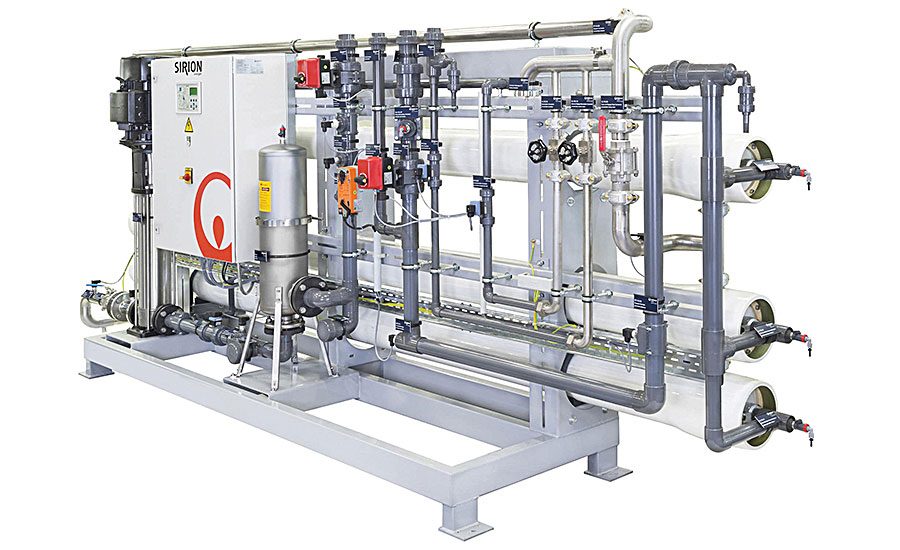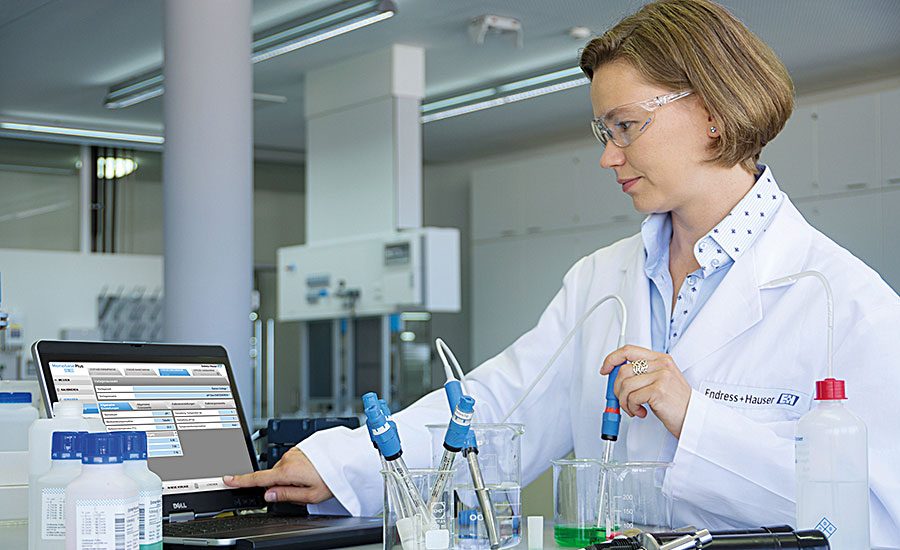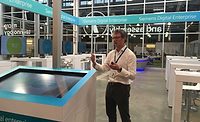A key component of most food and beverage processing is water, yet it is often overlooked. Water is used in many parts of the facility, from cleaning to its incorporation in recipes as an essential ingredient. Processors might assume the municipal water used in the plant arrives safely, but recent water quality scares, such as the high lead levels found in Flint, MI’s supply, have raised some significant questions.
“Food processors should assume that their municipal water supplies are monitored, analyzed and safe, as every municipal water source falls under the auspice of the National Sanitation Foundation,” says Dale Wynkoop, standard product line manager of industrial solutions for Veolia Water Technologies. “Having said that, processors should consistently perform water supply analyses on a regular basis.”
Monitoring water quality is necessary to determine impurity levels that could impact the plant’s end product, and if the water is posing any risks to the operations. Depending on its use, low-quality water can potentially produce off-tastes and inconsistencies in food and beverage products to causing equipment damage. Once used, the water leaving the plant must meet discharge limits set by regulatory bodies. Thus, the monitoring and treatment of a plant’s water for its duration of use should be carefully considered, as it can affect all aspects of the processing operations, including brand integrity.
Why water quality matters
There might not be anything more ubiquitously used in food and beverage processing than water. Breweries already know the importance of water quality, where it is the main component in a short list of ingredients. Even if it isn’t used as an ingredient, most plants heavily rely on water for cleaning and sanitizing or use it for generating steam.
“Because water has a dual use in food processing plants, serving as a utility medium for processing as well as an active ingredient for many food products themselves, it takes on a critical role in the eyes of the entire industry,” says Wynkoop.
Where and how a plant uses water in its facility will determine the possible risk it might pose to the operations or the product produced. Is it only being used for cleaning and sanitizing food and non-food contact surfaces? Is it used for environmental cleaning of product packaging? Is it an ingredient? Is it used for cooling or heating?
“When it comes to water quality, the challenge is to match the quality of water you have to the operation you are running,” says Wynkoop. “Water can be changed, altered or adapted either mechanically or chemically to meet the quality criteria that a food processor requires.”
When it is used as an ingredient, the most obvious effects low water quality can produce are on taste and consistency of a food product. In these instances, water must meet the requirements for that product. As mentioned before, breweries are highly reliant on the quality and availability of clean water. So much so, that brewers, especially in countries like Germany, have been increasingly concerned about the impacts of fracking practices used for natural gas production and its possible contamination of groundwater.
“If you are using city water for beverage production, it must be dechlorinated before it can be used in the product,” says Patrick Walsh, applications development manager for Hach, because it can affect the taste, odor and other qualities in the final product.
“For some ‘taste-sensitive’ industries, such as breweries, distilleries and beverage manufacturers, it is a challenge to maintain a consistent flavor profile in the final product,” says Wynkoop.
This is especially true if multiple production facilities are involved, because if the secondary facility has a low mineral content compared to the original plant, which has more total dissolved solids (TDS), then the producer might have to add nutrients to the water to get the same flavor profiles. For this reason, many food and beverage processors are using advanced reverse osmosis (RO) systems to strip out most of the TDS as a way to manage standard tastes and flavors.
Low-quality water used in other food items, like hot dogs or lunchmeats, can also produce negative effects. Ingredients might not react with each other in a consistent or predictable way, off-colors and malodors could be produced, and existent undesirable chemicals could contaminate the product. For these reasons, water monitoring and preparation are crucial in meeting high quality standards for the products in which it is used. However, it might be less as important if water is being used as a processing tool.
“If food and beverage processors are using city water, and the water is used just for sanitation or to move products around in processing [fruits/ vegetables], the water quality isn’t as critical until it is treated before leaving the facility,” says Walsh. When being discharged, wastewater must meet requirements set by the EPA or other agencies receiving the stream. “Water could be also used for steam or power generation, so it is important to ensure purity of water to protect expensive capital equipment.”
Low-quality water used in utilities can damage the equipment due to water alkalinity, pH and dissolved oxygen content. Also, operational efficiency can be negatively impacted due to sediment clogging equipment and preventing proper water flow.
“Chemicals and organics can cause corrosion of metal surfaces, while minerals cause limescale buildup, reducing equipment efficiency, which eventually results in a total breakdown,” says Hari Venugopalan, director of global product management for Crystal IS, a manufacturer of proprietary, high-performance ultraviolet (UVC) LEDs.
Water risks and parameters
The risk low-quality water poses to operations is directly related to how the water is being used. However, many water quality challenges will depend largely on the plant’s location, even if the municipal source of the water exceeds EPA and state standards.
“Most countries do have municipal water quality standards, but there are numerous factors that can impact treatment performance and water quality post treatment,” says Nalco Water’s Blake Schomas, a food and beverage water expert. “Municipal water supply is treated to drinking water standards that may or may not be ideal for the food producer’s application and, as such, may not meet the producer’s needs.”
There are rare occasions that water leaves the municipal plant, and it does not meet regulatory requirements. But even if the water is safe upon arrival, there might be issues in the facility’s distribution system. For instance, Schomas says there might be pre-established biofilms, which occur when microorganisms adhere to wet surfaces and aggregate into microcolonies, or other deposits in the water distribution pipes that can “seed” the water with pathogens and other contaminants.
Also, more regions, especially those in water-stressed areas, are increasingly concerned with salt or TDS concentrations in effluent. Schomas says if you are located in one of these areas, you may have to comply with more stringent TDS limits and will need to test your incoming water to determine whether you need to reduce your incoming TDS levels to maintain effluent standards.
“There are numerous things that the processor should be aware of when water enters the plant,” says Walsh. “Turbidity, levels of disinfectants, pH, metals, hardness, alkalinity and many others [factors] can affect their production and water quality.”
Potential impurities run the gamut from those that are natural and dissolved into the water supply, such as ions associated with water hardness, to organic matter in surface water that needs to be removed, such as leaves or algae. Veolia’s Wynkoop warns that human-induced water impurities or pollutants must also be considered when looking at water quality and determining a treatment plan.
Once the water enters the plant, there can be a variety of contaminants it might encounter. Here too, how the water is being used in the facility will determine how the supply should be tested and treated.
“You should be most concerned about the specific water properties that will have the greatest impact on your product,” says Alessandro Culotti, principal microbiologist with Nalco Water. “For example, fresh-cut processors that rely on wash water for cleaning and chilling produce need to be most concerned about the presence of pathogens and other potentially harmful microorganisms.”
On the other hand, operations that use boiler water and steam generation will be primarily concerned with other aspects, such as water alkalinity, pH and dissolved oxygen content. Water can become contaminated while in use at the plant. If biofilms are present on equipment and pipe surfaces, water can not only become loaded with organics, the films can also lead to inefficiency problems, such as decreased heat exchanger efficiency, decreased water flow and microbial-influenced corrosion.
“Contamination can occur during water separation in heat exchangers,” says Steven Smith, senior analytical product marketing manager for Endress+Hauser. “Water used to heat or cool a product in the heat exchanger is passed over plates that separate the water from the food or beverage product. A leak in a heat exchanger seal or plate can immediately contaminate the water with the food product and lead to further product contamination.”
Also, water quality degradation can occur during manufacturing through a myriad of ways. Oil and grease can get into process water from product containers rupturing during cooking and pasteurization, says Wynkoop.
In addition, soils in transport flume water and cut-food material can contribute to compromised water, says Culotti.
Testing and analysis
Considering all the ways water can become contaminated, it is important for processors to test water to ensure the consistency and quality needed for their specific applications.
“Ideally, a processor would have a testing regime that would allow it to determine if the water meets safe drinking water standards, achieves the plant’s product quality needs and has the ability to track and measure seasonal changes,” says Amit Gupta, senior research scientist at Nalco Water.
Both microbiological and chemical assessments should be performed on water to ensure it meets the specifications guided by the processing requirements.
“Analysis parameters include pH, conductivity, turbidity, dissolved oxygen, hardness, nitrite, iron and chlorine,” says Smith. “Many of these measurements can be made directly in line, while others are performed using a sampling method.”
Among the many tests a facility can use to test water quality, Hach’s Walsh suggests a mix of both lab/portable and process analyzers to check for any issues.
“Process analyzers are a great way to continuously monitor the water quality and can be useful in establishing baselines and then quickly see changes in the quality of the water,” he says. “This allows operators to make immediate changes that ensure water quality.”
Lab testing, both internal and external, can be used to detect a wide variety of parameters and can be used to verify and sometimes calibrate the process instruments. Additionally, Walsh stresses the importance of maintaining the accuracy and reliability of the analyzers by service professionals to produce correct results.
“Many large processors have their own onsite water labs, but more processors are moving towards the use of automated sensors and monitors, which can keep their water and the systems that treat it within tight control ranges,” Wynkoop says.
A process water loop can have a chlorine analyzer attached to keep the chlorine at a level where it won’t affect the product’s taste. In a similar way, hardness can be monitored to ensure the mineral content of process water is kept constant. Also, to keep tabs on the effectiveness of membrane or ion exchange-based treatment systems, conductivity can be monitored in both utility and process water systems.
Some of the new instruments can handle multiple parameters in different operations. For instance, the Hach AT1000 can test pH, acidity, chlorine and other qualities. Nalco Water’s 3D TRASAR technology is another system providing automated measurement and documentation of key water parameters. It provides automated monitoring and control platforms for a variety of process and utility applications, making measurement easier and data actionable.
“It is important to test turbidity in the incoming water,” says Walsh, as turbidity is one of the key parameters to indicate water quality. Lab, portable turbidity or process turbidity analyzers are all available to processors. “In the past, customers might have had trouble comparing readings from lab and portable instruments with readings from process analyzers, but new technology is helping to resolve this issue.”
More than just ensuring product quality and safety, water quality monitoring can help in reducing operating costs and supporting sustainability efforts. Walsh says organics measurement is one example of this, where organic contamination of food and beverage can be quickly detected by total organic carbon (TOC) measurement.
“TOC measurement can help detect product loss to prevent valuable products from going down the drain to wastewater treatment,” he says. “This [measurement] will increase production yield, reduce operation costs and prevent wastewater overloading, which could result in exceeding wastewater discharge limits.”
Also, with the use of real-time control systems, processors can optimize their wastewater treatment process to save chemical consumption, reduce energy use and stay regulatory compliant.
Water treatment methods
Once the water quality has been determined to be unsuitable for the target application, whether it is due to the supply’s source, existent impurities or the operating conditions, there are a number of technologies available to improve the quality and safety of the water. Treatment methods can be based on either chemical or non-chemical technologies. The chemical methods use oxidizing and non-oxidizing biocides for microbiological and corrosion control.
“Non-chemical methods include the use of reverse osmosis membrane technology, ion exchange, activated carbon filtration, deaeration, settling and UV disinfection to remove contaminants and deactivate pathogens and other troublesome microorganisms,” says Gupta.
Some of these techniques have been available for a number of years, but have recently been improved.
“Ion exchange technologies, which have been around for over 50 years, have made improvements in the efficiency of their exchange capacities,” says Wynkoop. “Filtration technologies have evolved considerably over the past 20 years, and now there are many types of disc filters and multimedia filters in use as low-cost, effective ways to remove suspended material from water sources.”
Membrane systems, like reverse osmosis, are also continuing to evolve and now are able to recover as high as 98 percent. This greatly reduces the amount of water wasted in reject streams, as well as lowers the amount of wastewater to be treated.
UVC radiation can be used to disinfect water by deactivating bacteria. The UVC light can also determine the effectiveness of cleaning between changeovers, even in equipment utilizing clean-in-place (CIP) systems. The UV spectroscopy can measure the bacterial concentration in rinse water, allowing operators to optimize the cleaning process, as well as the amount of sanitation chemicals used.
“Closely tracking the amount of chemicals used in the process by spectroscopy with UVC LEDs can positively impact operation costs and ensure consumer safety,” says Venugopalan with Crystal IS. “While overdosing can result in corrosion and increased cost, too little disinfectant can lead to contamination and jeopardize food safety.”
So, the treatment approach selected should be based on what the processor is trying to achieve, whether it is improving the sustainability of the plant, reducing operating costs and/or maintaining the ability to operate in water-stressed areas.
On a final note, as water becomes harder to obtain in drought areas and as a result becomes more expensive, Wynkoop suggests processors look into adopting water recycling and reusing strategies in their operations. These practices will not only help the processor’s bottom line, they will also impact the sustainability of a plant’s operations and could prepare it for possible future governmental regulations.
For more information:
Nancy Limberg-Meyer, Nalco Water, 630-305-2478,
nlimberg@nalco.com, www.nalco.com
Patrick Walsh, Hach, 800-227-4224,
pwalsh@hach.com, www.hach.com
Steven Smith, Endress+Hauser, USA, 888-363-7377,
steve.smith@us.endress.com, www.us.endress.com
Dale Wynkoop, Veolia Water Technologies, 800-875-4075,
www.veoliawatertech.com
Hari Venugopalan, Crystal IS, 518-271-7375,
venugopalan@cisuvc.com, www.cisuvc.com
